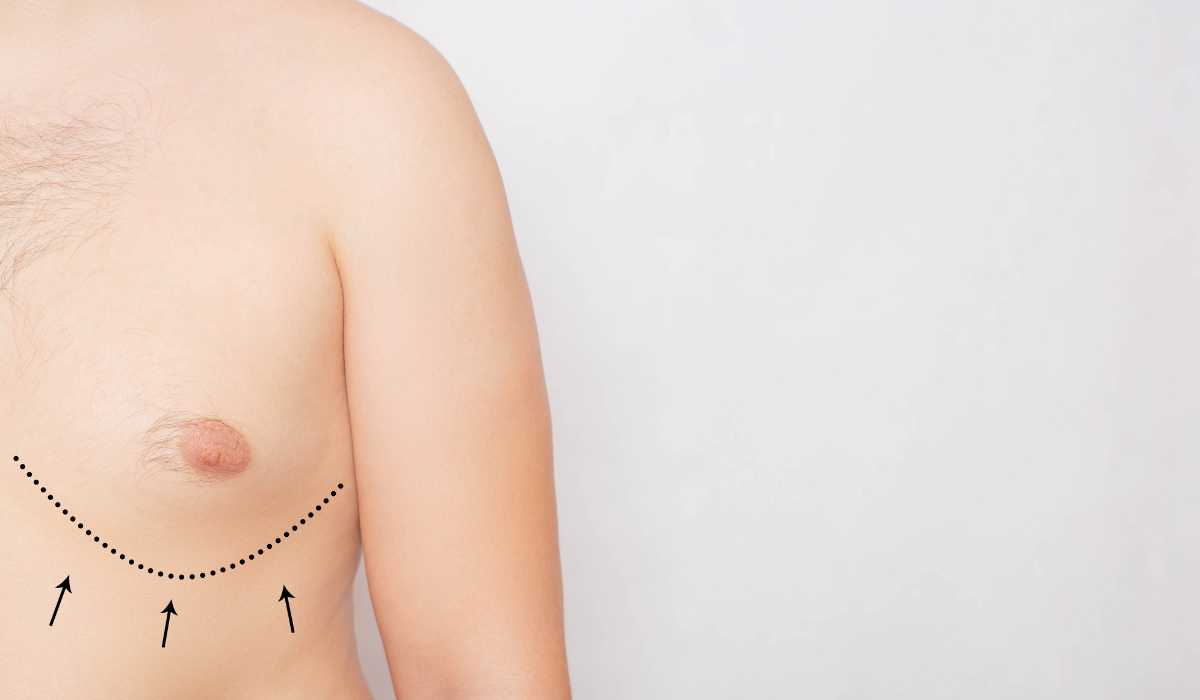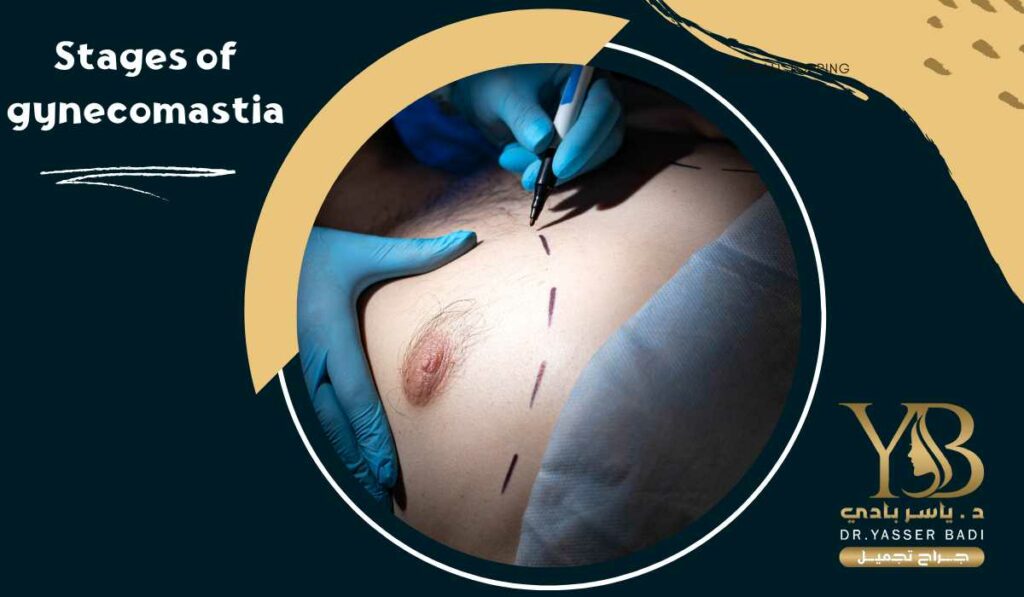Gynecomastia is a common medical problem with different stages affecting men of different ages which is considered a source of embarrassment and shame that might lead to loneliness and isolation.
That’s why many modern cosmetic techniques have been developed to treat different gynecomastia degrees according to the plastic surgeon’s initial medical diagnosis and get rid of this disturbing problem that affects men at different ages.
This problem develops as a result of various reasons, some of which are randomness, ignorance, hereditary factors, hormonal imbalance, and side effects of wrong treatment.
عناصر المقال
ToggleWhat is gynecomastia?
Dr. Yasser Badi simply discusses the meaning of gynecomastia in cosmetic medicine which is an increase in the secretions of the mammary glands and enlargement of the breast tissues in men mainly as a result of hormonal imbalance where estrogen levels exceed the male hormone levels, and thus the male body faces a disorder whose effect appears in the breast area.
This problem affects men of different ages however it’s more common in young men in adulthood as a result of a sudden change in hormonal levels and in men after their fifties as a result of multiple factors related to aging. There is what is called pseudo gynecomastia, which is breast enlargement in men as a result of the accumulation of fat in that area due to obesity and unhealthy lifestyle.
Causes of gynecomastia in men
Dr. Yasser Badi clarifies that false gynecomastia results mainly from the accumulation of fat in the breasts not due to enlargement in the breast tissue, in contrast, true gynecomastia results from many reasons, which are:
- Genetic factors and family history.
- Unhealthy diet saturated with hormones.
- A natural change that young people go through as a result of puberty.
- The decline in testosterone levels as a man reaches his fifties.
- Some diseases such as lethargy, liver and kidney failure, or hyperthyroidism.
- Excessive consumption of depression medications.
- Infection with AIDS.
- Unwanted side effects of drugs used to treat prostate problems.
Signs of the first degree of gynecomastia in men
Dr. Yasser Badi, the plastic surgeon, indicates that this degree of gynecomastia in men is safe, and it does not require any surgical interventions while requiring only topical cosmetic creams that help reduce the sagging in that area, in addition to exercising.
In addition, the first degree of gynecomastia is considered the lowest degree, and considered unnoticeable and unobtrusive as well with no obvious drooping or sagging. The correct diagnosis of this degree depends on examining the brown areola area in the male breast and checking for enlargement or darkness.
Signs of the second degree of gynecomastia in men
The second stage of gynecomastia is the most common type among the four degrees as Dr. Yasser Badi illustrates, and is characterized by the presence of noticeable enlargement and increased tissue around the brown areola area which extends to the muscles and is obvious clearly in tight clothes. In this stage, the plastic surgeon primarily directs the patient to follow a healthy diet to control the hormonal imbalance in the body instead of therapeutic medications or surgical interventions.

Signs of the third degree of gynecomastia in men
Dr. Yasser Badi distinguished between second-degree and third-degree gynecomastia by increasing the degree of breast enlargement beyond the simple to moderate level to become moderate to large enlargement. In this stage, breast enlargement becomes significant, with protruded breast edges that appear even in loose and wide clothes, the patient in this stage suffers from sagging and drooping breasts as well.
This degree of breast enlargement might develop in one breast or both breasts, the management of this stage requires surgical intervention to get rid of excess tissue.
Signs of the fourth degree of gynecomastia in men
This stage is the most severe stage of gynecomastia that men face and is known as female gynecomastia. Here the man faces severe breast fullness, enlargement, and sagging. This condition requires urgent cosmetic intervention to remove excess tissue and Suction excess fat, if any, then finally firming the sagging skin until the breast takes its natural, muscular shape.
Steps of third-degree gynecomastia in men treatment using VASER technology
Dr. Yasser Badi explained the role of modern cosmetic techniques in treating breast enlargement in men, and pointed out the steps of the process of suctioning excess fat and getting rid of mammary tissue and glands, where the process is done through:
- Anesthetize the patient using local anesthesia
- Sterilize the breast area well.
- Small incisions are made in the breast area.
- Directing the ultrasound beam from the VASER device towards the targeted area.
- The energy generated from the ultrasound beam melts fat, treats skin problems, and stimulates elasticity and natural collagen.
- The session lasts for a maximum of forty minutes.
- The surgical incisions are closed.
Steps of fourth-degree gynecomastia in men treatment using VASER technology
Dr. Yasser Badi explained the steps of the process of treating extreme breast enlargement in males. The steps of the process are as follows:
- Anesthetize the patient using general anesthesia.
- Sterilize the breast area.
- A surgical incision is made below the brown areola area.
- Excess breast tissue is gently removed.
- Implementing third-degree sagging steps for removing excess fats in that area, based on VASER technology.
- Tighten excess sagging skin until the skin takes on its natural shape.
- Closing the surgical incision.
- Apply a medical bandage.
- Wear a medical compression corset.
Instructions after gynecomastia surgery in men
Dr. Yasser Badi provides several instructions that must be followed after the operation to achieve complete success. These instructions are:
- Follow a healthy eating pattern.
- Quit smoking so as not to harm the results of the surgery.
- Drink an adequate amount of water, fluids, and juices to keep the body hydrated.
- Perform gentle movements to stimulate blood circulation and avoid strenuous exercise.
- Do not carry heavy objects, and it is preferable to rest throughout the recovery period.


